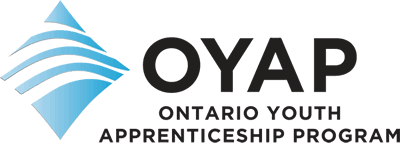 |
Are students provided with Workplace Safety Insurance Coverage? |
 |
Yes. The Ministry of Education covers the student under WSIB during the work placement. This coverage is documented in the form of a Work Education Agreement (WEA), which is signed by the employer, the student, the parent and the teacher prior to the student commencing work. If the student is PAID, the employer provides the WSIB protection. |
 |
Am I obligated to accept the student(s) after the interview process? |
|
|
The final choice is ultimately up to the employer. The student must fit the employer’s criterion as a potential employee. The employer is under no obligation to accept the student after the interview if the student proves unsatisfactory. The employer is not obligated to keep the student beyond the co-op experience either. There needs to be benefits for both the student and employer to make OYAP work. |
 |
As an employer, how do I choose the employee to train the student? |
|
|
Selection is dependent upon your knowledge of your employees, and who would best suit the training role. The employer is also expected to interview the candidates and select the student that best meets the needs of the company. The OYAP Coordinator or Cooperative Education teacher could assist you with these decisions. |
 |
Should the student be performing actual job functions at my place of employment? |
|
|
Yes. The student is there to learn all of the competencies necessary to meet the skills requirements of the Ministry of Training, Colleges and Universities for that particular apprenticeship. As the student becomes more proficient, it is expected that the level of responsibility will also increase. The student’s participation will be limited only by legal regulations and safety precautions as judged by the employer. |
 |
How are conflicts handled? |
|
|
If a poor attitude or negative behaviour is evident, please inform the OYAP Coordinator or Cooperative Education teacher as early as possible. All attempts to correct the situation will be made. If this is unsuccessful, the placement may have to be terminated. If there is an inability to learn or perform the tasks required, please contact the OYAP Coordinator or Cooperative Education teacher. The career choice of the student will be re-evaluated, and, if the situation does not improve, the placement will end for the student. If there is a personality conflict that cannot be mended, then the placement will be terminated and an alternative placement will be sought. |
 |
Can any employer take on an apprentice? |
 |
Employers who have qualified journeypersons in place (or equivalent) and who are willing to provide students with supervision and training may qualify for participation in OYAP. Employers who foresee a need to hire future apprentices are invited to participate in OYAP. |
 |
Are students paid for their apprenticeship training? |
|
|
Cooperative Education students are earning credits for work experience related to in-school curriculum. The School Board does not require that students be paid for assigned co-op placement time but a nominal honorarium for work expenses - transportation, lunch and uniforms or equipment is acceptable. If a student stays at the placement beyond the co-op placement hours, they may be hired as an employee and paid. The employer then assumes responsibility for Workplace Safety & Insurance Board (WSIB) coverage. |
 |
Does it cost an employer anything to take on an OYAP Apprentice? |
|
|
No, not in terms of initial cash outlay. An employer, however, has to be willing to train the worker who is learning how to do the job. The Ministry of Education covers the Workplace Safety and Insurance Board costs while the student is registered with OYAP. If the student is later hired as an employee the employer must pay the WSIB coverage. Apprentices are not an expense but they are an investment in the future of the firm and the industry. |
 |
What hours does the student work? |
|
|
The student will provide a calendar which outlines the specific days and hours that he/she is available according to the specific school timetable. If students are employed beyond their co- op placement hours, it is assumed that they will be paid and that the employer will be responsible for the WSIB coverage. |
 |
Do the students have their own tools? |
|
|
Students in OYAP do not usually have tools but once signed to an apprenticeship agreement and having made a commitment to the trades, they should be encouraged to pursue the “Loans for Tools” through the MTCU and start to acquire the necessary tools. |
 |
When is the student monitored by the teacher? |
|
|
The supervisor can expect full support and assistance as the teacher monitors the student’s progress regularly throughout the training period. The goal is to ensure mutually beneficial partnership among the training supervisor, the teacher and the student. |
 |
How is attendance monitored? |
|
|
Students are responsible for calling the training supervisor and the co-op teacher if they will be late or absent from the workplace. The teacher maintains records along with the student logs. If the student is frequently absent or late, the employer should remind the student of the company’s policy. The student may be sent back to the school if satisfactory improvement is not demonstrated. |
 |
Is the student guaranteed employment upon graduation? |
|
|
No. The co-op employer is under no obligation to employ the student beyond the OYAP placement. The employer may hire the student if a position is available but in any case the student can use the experience and references in finding permanent employment upon graduation. |







There are over 150 skilled trades that involve apprenticeship training.
Click here to find out what they are






















